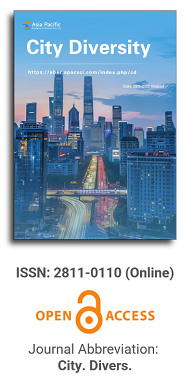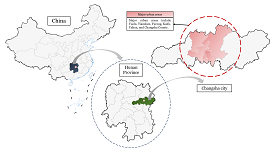
Asia Pacific Academy of Science Pte. Ltd. (APACSCI) specializes in international journal publishing. APACSCI adopts the open access publishing model and provides an important communication bridge for academic groups whose interest fields include engineering, technology, medicine, computer, mathematics, agriculture and forestry, and environment.

As China's pillar industry, the property market has suffered a considerable impact in recent years, with a decline in turnover and many developers at risk of bankruptcy. As one of the most concerned factors for stakeholders, housing prices need to be predicted more objectively and accurately to minimize decision-making errors by developers and consumers. Many prediction models in recent years have been unfriendly to consumers due to technical difficulties, high data demand, and varying factors affecting house prices in different regions. A uniform model across the country cannot capture local differences accurately, so this study compares and analyses the fitting effects of multiple machine learning models using February 2024 new building data in Changsha as an example, aiming to provide consumers with a simple and practical reference for prediction methods. The modeling exploration applies several regression techniques based on machine learning algorithms, such as Stepwise regression, Robust regression, Lasso regression, Ridge regression, Ordinary Least Squares (OLS) regression, Extreme Gradient Boosted regression (XGBoost), and Random Forest (RF) regression. These algorithms are used to construct forecasting models, and the best-performing model is selected by conducting a comparative analysis of the forecasting errors obtained between these models. The research found that machine learning is a practical approach to property price prediction, with least squares regression and Lasso regression providing relatively more convincing results.
Issue release: 31 December 2020
The construction of creative cities is an important choice for the current urban transformation and development. Taking the “city of gastronomy” of UNESCO creative cities network as the research object, this paper analyzes the impact of cultural diversity on creative cities. Based on the theoretical connotation of creative cities and the logical analysis of the relationship between cultural and creative industries and creative cities, this paper puts forward the theoretical basis for the construction of “food city”, and constructs the urban food creative system from four aspects: urban food culture, creative community, environment and atmosphere, investment and financing, and intellectual property protection. On this basis, combined with the group characteristics of the “food city” and the case of Yangzhou, this paper analyzes the practical process and key issues of creating the “food city”, and summarizes the experience and Enlightenment from the “food city” to the creative city.
Issue release: 31 December 2020
With the rapid development of urbanization, modernization, information technology and globalization, cultural patterns are becoming more and more diverse and social groups are becoming more and more atomized. We need to re-examine cultural diversity and think about how education can promote cultural exchange and integration. Based on the concept of multicultural education, this paper analyzes the current situation of cultural diversity in Chinese society from the dimensions of urban and rural areas, nationalities, regions, social classes, gender and globalization. On this basis, it explains several core values of pluralistic and cultural education: achieving equity by teaching tolerance and recognition, reflecting on power relations and knowledge construction, pluralistic unity and cultural integration, and cosmopolitanism in the age of globalization. From the perspective of improving educational policies, it is proposed that cultural diversity should be recognized and recognized in educational policies and practices, and appropriate curriculum power and space should be given. Construct the flexible education policy that puts fairness first and quality equal; with the help of big data and information technology, we can construct accurate and personalized multicultural education.
Issue release: 31 December 2020
The biological culture as a new cultural concept and form of expression, attaches great importance to the internal relation between culture and biological, enrich and perfect the traditional ecological culture elements such as concept, value orientation, a nd inspire modest grab in natural resources, respect nature, respect nature of cultural behavior, real-ize the harmonious development of man and nature. As stewards of local natural ecosystems, ethnic minorities main-tain biological diversity through their traditional cultures, such as living customs, religious beliefs and customary laws. As the material basis for its survival, biodiversity also enriches and develops cultural diversity. Biodiversity and cul-tural diversity interact and develop synergistically. Biological research ethnic areas - the formation and development of cultural diversity, biological and cultural interaction relations, the external factors of biological, cultural diversity and its future development trend of change, the influence of the understanding of the biological culture connotation and biological - synergy to protect cultural diversity has important theoretical and practical significance
Issue release: 31 December 2020
Taking the specific practice of an old city space as an example, this paper distinguishes the positions and practices of three actors in the space: Urban planners, managers and ordinary citizens hold an extreme modernist position, firmly believing that the old urban space needs to be removed and transformed into a new urban order; Citizens living in the old city space hold a more complex and contradictory position. As the bottom group of the city, they pay attention to the exchange value of community space, but it is difficult to change their living conditions, while maintaining the exclusion of the old city space and the floating population; The floating population builds the old urban space into a space for production and life, making it a "settled community" entering the city. Finally, the diverse position and practice of the old city space show its significance of urbanization and its important role in the construction of urban diversity.
Issue release: 31 December 2020
The 13th Five Year Plan of the National Basic Public Service System plays an important role in promoting the equalization of basic public services in urban and rural areas. Based on the panel data of 242 prefecture level cities in 30 provinces of China from 2008 to 2018, this paper uses the spatial econometric model for empirical analysis. The study finds that the direct effect of cultural diversity on the equalization of public cultural services is negative and significant, that is, cultural diversity hinders the equalization of public cultural services in the region; the overall effect of economic growth on the equalization of public cultural services is positive and significant, and economic growth is indeed conducive to the promotion of public cultural services equal development in the region. Based on this, it is proposed that local governments should establish a differentiated supply system of public cultural products to effectively integrate local cultural resources, talents, volunteers and social organizations. We will increase financial investment in public cultural services and use government purchases to promote the gradual equalization of public cultural services in rural areas, border ethnic areas and urban rural fringe areas.

Prof. Mehmet Cetin
Kastamonu University,
Turkey
Polish Scientific Bibliography


 Open Access
Open Access